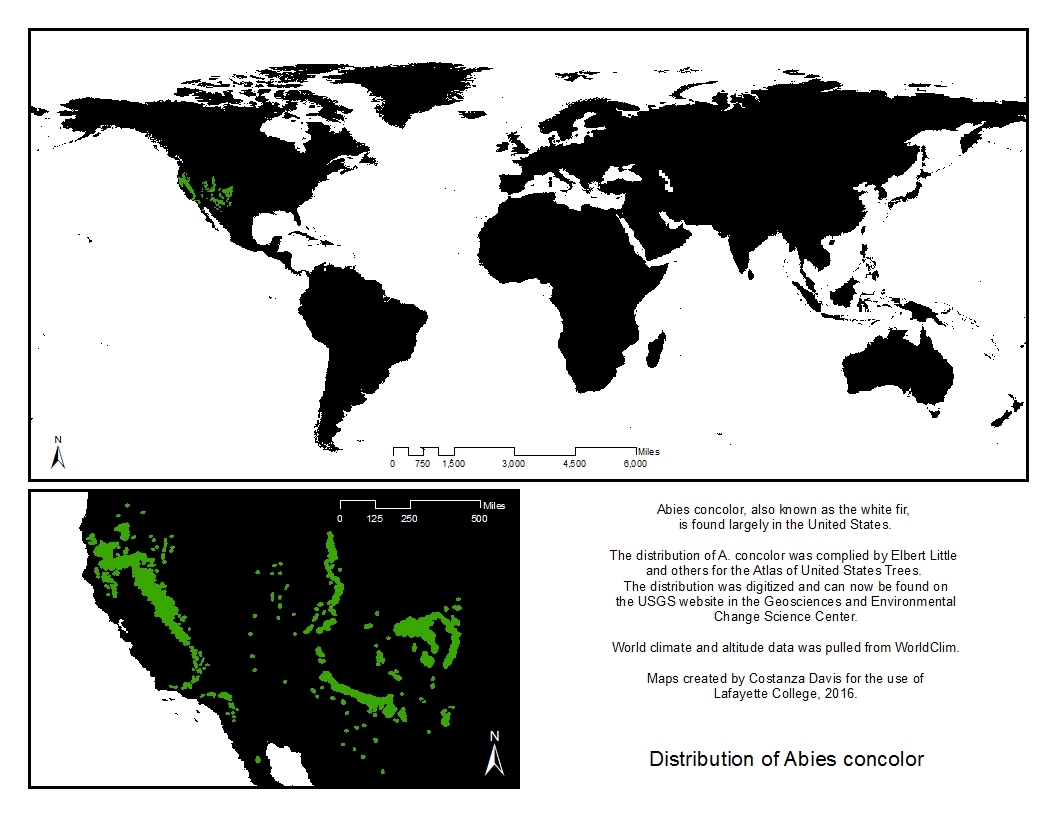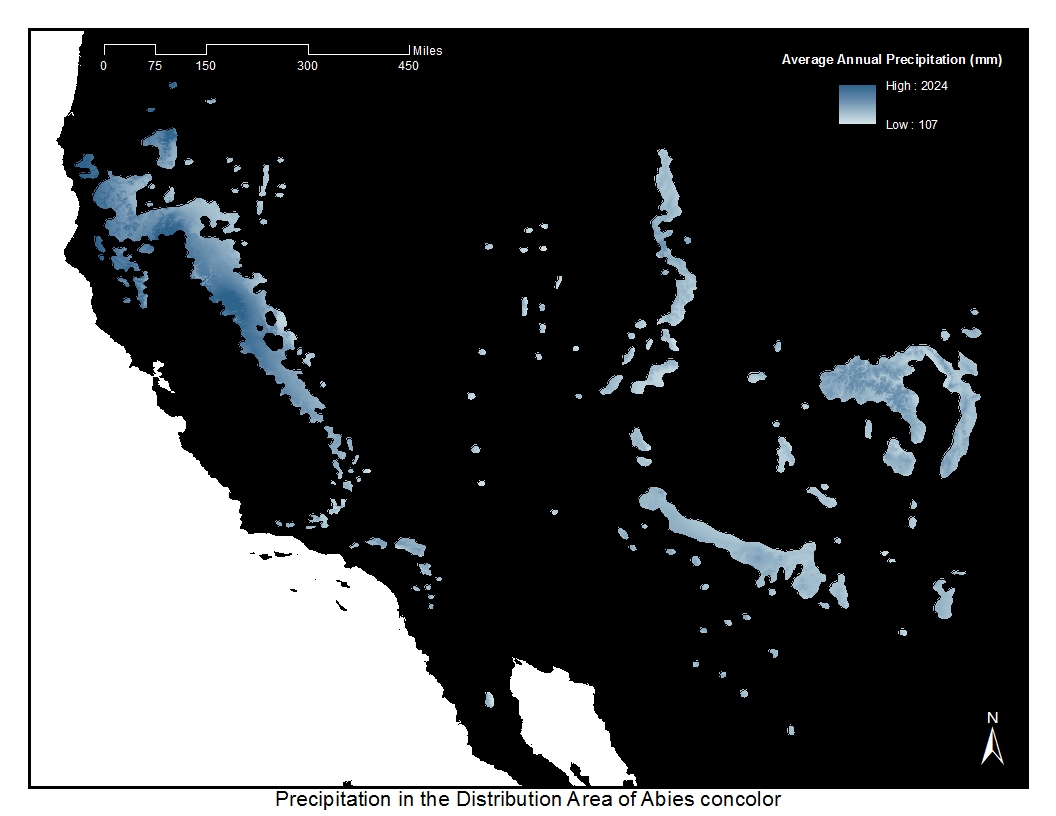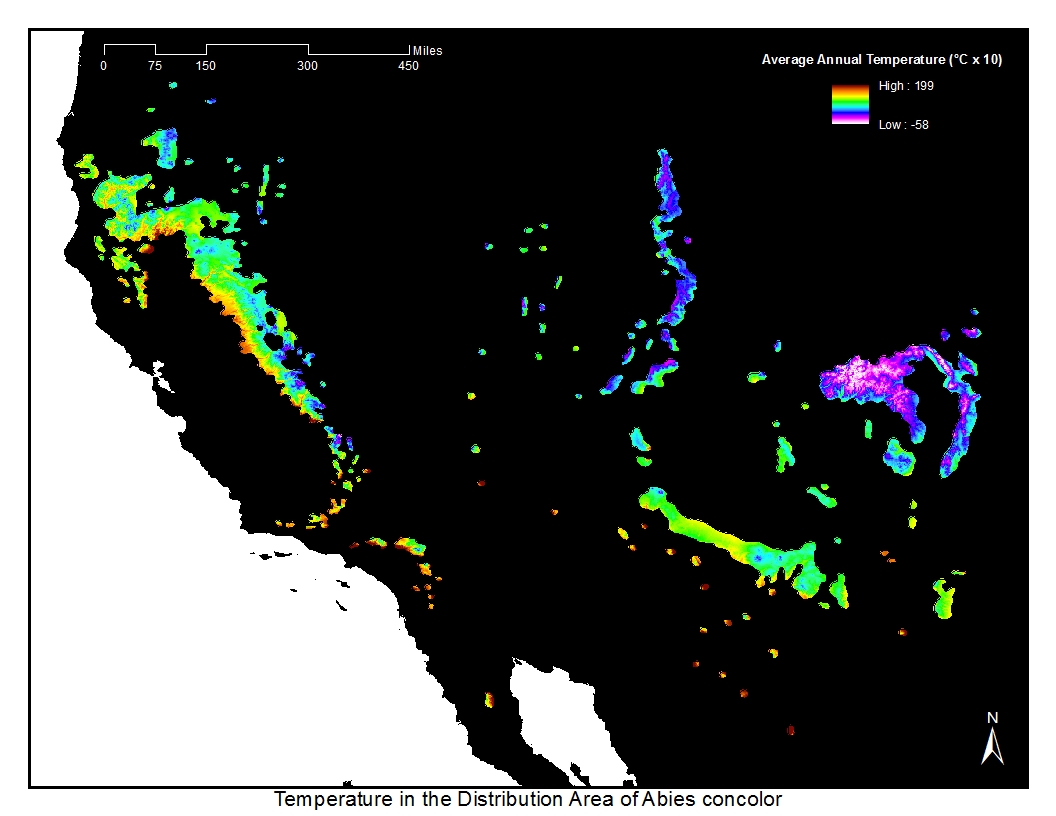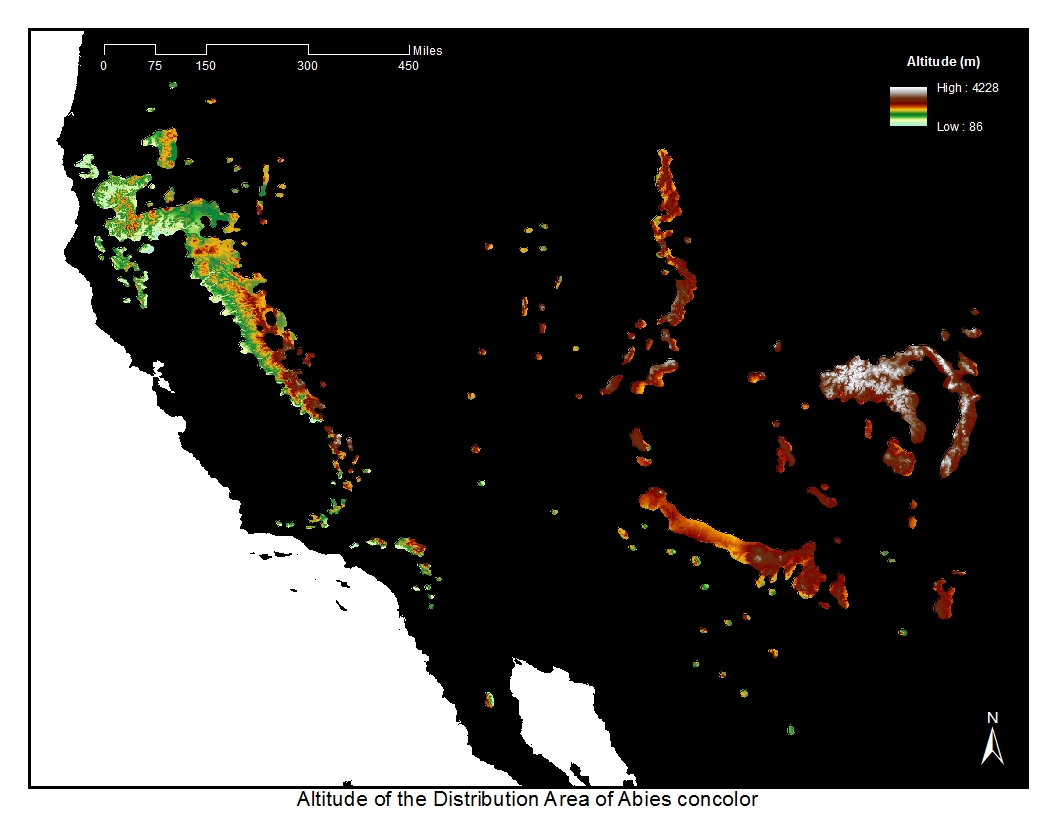The white fir, Abies concolor, is also known as the Colorado white fir, and it has been noted to thrive best in the central Sierra Nevada of California.
As most firs are, it is an evergreen, coniferous mountain tree, usually found in forests, and it is also frequently used as a Christmas tree. It is protected through the Nevada Natural Heritage Program as a Christmas tree native to Nevada.
As a mountain tree, its preferred elevation ranges from 4,000 to 10,000 feet. The white fir prefers areas with long winters and the moderate to heavy deposits of snow found in moderately humid climates. Typically, it prefers precipitation to exceed 20 inches per year, and thrives when precipitation is between 35 to 75 inches. The white fir also is commonly found on moderately to strongly acidic soils with granular and clay loam. It prefers deep soils with enough moisture, and does well on a wide variety of parent materials.
While the white fir can have a lifespan extending beyond 300 years, its growth in the first 30 years is very slow. It can take between 6 and 9 years to produce a 6 foot tree. It is very tolerant of certain conditions, such as shade, and requires no pruning, but young trees can be easily killed by fire and need to be safeguarded against such. Additionally, sudden exposure of parts of the trunk to the sun leadsto the tree getting sunscalded, and due to its shallow, wide root system, it can be windthrown during high wind. The white fir is one of the most sensitive conifers in terms of Sulphur dioxide and several pests and fungi threaten this tree.
The tallest white fir found was 192 feet tall with almost 107 inches in diameter of the trunk, but more commonly large specimen are 130 to 180 feet tall with 39 to 65 inches in trunk diameter.
The bark of the white fir is ash grey and can often have deep furrows with horny, flattened ridges. The bark can reach 7 inches of thickness on older trees.
Needles are 2 to 3 inches long, flat, and silvery-blue to silvery-green. The needles can extend from the branches at right angles from all sides of a branch, although sometimes are two-ranked, meaning the needles only come out from either side of the branch.
The cones are olive-green to purple and can be 2 to 5 inches long. Cones begin to disintegrate, shedding seeds, in late September or early October. The amount of seeds distributed during this time varies annually; the largest seed crops occur every 2 to 5 years.
The seeds are often eaten by squirrels, while porcupines gnaw on the bark. Deer may also eat the seedlings of the white fir.
Note that there are two varieties of white fir, a distinction based largely on needle form and terpene content. Var. concolor is also known as the Rocky Mountain white fir, while var. lowiana is also known as the California white fir. Concolor is the variety found at Lafayette College, and a tree is found south of Van Wickle Hall, between the building and South College Drive.




